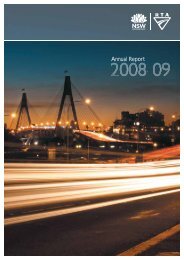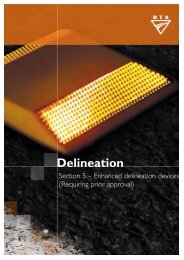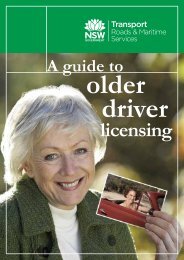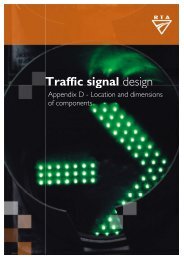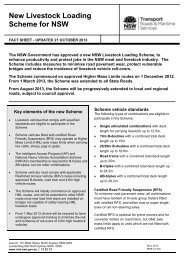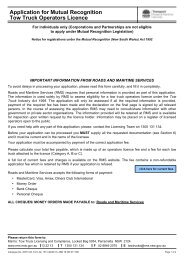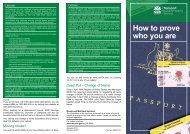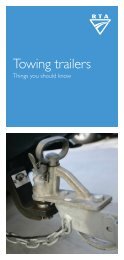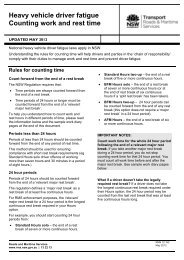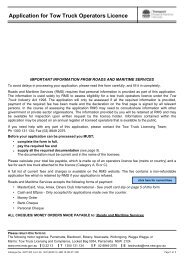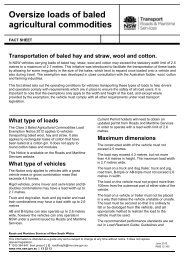Hazard perception handbook - RTA
Hazard perception handbook - RTA
Hazard perception handbook - RTA
Create successful ePaper yourself
Turn your PDF publications into a flip-book with our unique Google optimized e-Paper software.
A scanning routine<br />
Experienced drivers constantly scan for hazards when driving. They do it<br />
automatically. To help you become better at scanning for hazards, here is a good<br />
routine to develop.<br />
LOOk UP TO 12 SECONdS AHEAd<br />
In a 60 km/h zone this means looking up to 200 metres ahead; on a freeway at<br />
90 km/h it is up to 300 metres. Scanning this far ahead gives you a chance to spot<br />
hazards that are shaping up well in advance (eg a broken down truck, an accident,<br />
the road narrowing to one lane). you will also have time to avoid them.<br />
In heavy traffic, you may not be able to look 12 seconds ahead. But you are likely to<br />
be travelling more slowly which helps make up for this.<br />
Scanning far enough ahead may mean looking through the windows of vehicles<br />
ahead of you to see what is happening. By doing this you will know in advance if a<br />
car ahead is braking as you will see the brake lights come on several cars ahead. This<br />
gives you more time to brake if you have to. Scanning means that you are not just<br />
looking at the vehicle immediately in front of you.<br />
Looking ahead also means scanning from side to side for hazards on the roadside<br />
or at intersections. <strong>Hazard</strong>s may be parked cars, cyclists or pedestrians. Effective<br />
scanning means keeping your eyes and/or your head moving and not concentrating<br />
on just one spot.<br />
Blind spot area<br />
Check blind spots before changing your road position.<br />
6<br />
<strong>Hazard</strong> <strong>perception</strong> <strong>handbook</strong> 59



